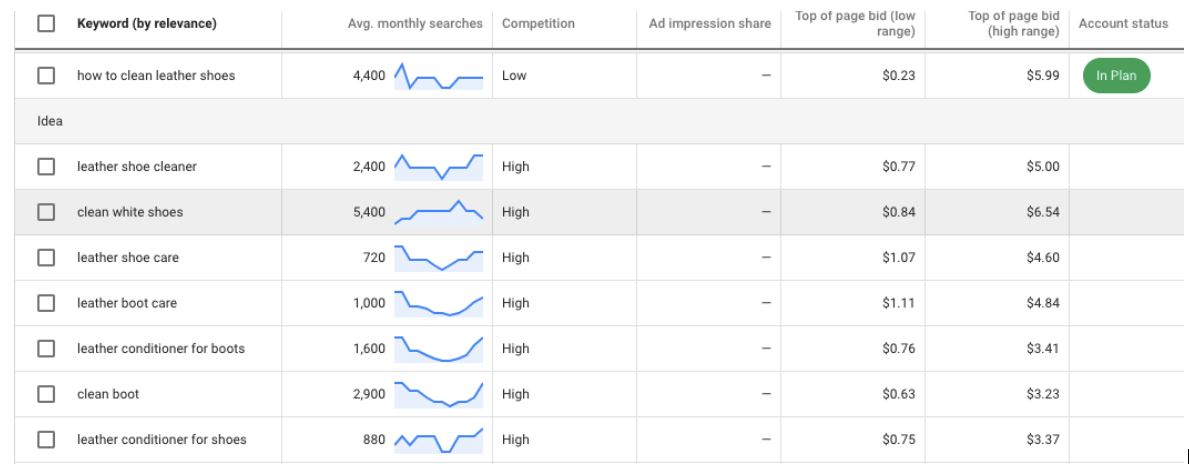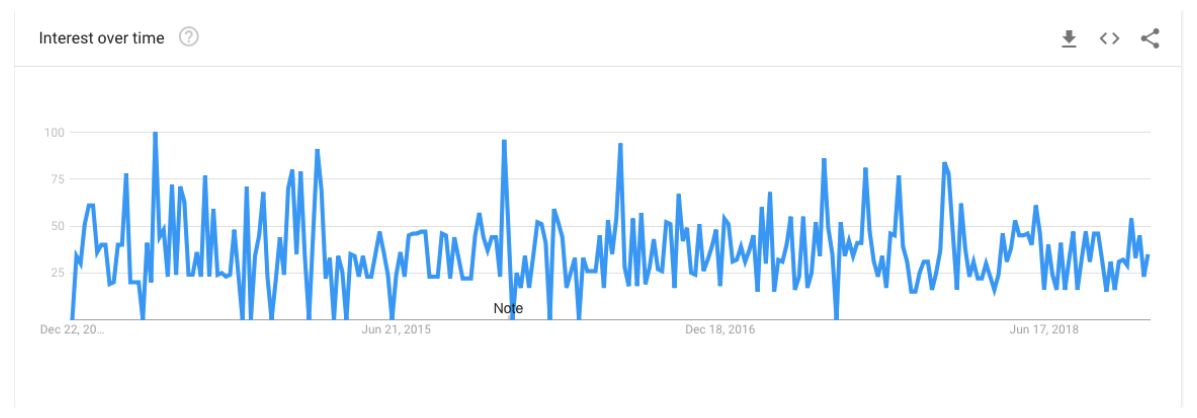How to Use Quora to Create Content
Related Services
Credits
Writer: Brad Ward

I wanted to create some guides so you as writers have support when generating new content. In this how-to, I will walk you through step-by-step on how to use Quora as a powerful tool for coming up with content ideas
Why Quora is a great source
If you’re unfamiliar with Quora, don’t fret. Quora is a question-based online community that is free to everyone. Quora reduces the need for “feed” scrolling like some other user-based question sites and does not allow anything but questions as it’s main point of contact. Images and news articles aren’t allowed. Additionally, once a question is posted, anyone can answer it. These answers can be upvoted or downvoted too, so you can gauge how receptive the community is towards certain answers. This does a few things, like create a genuine public forum, expose more unique experiences as experiential knowledge, and provide a more accessible knowledge for hard-to-answer questions.
Quora also works because it’s very easy to use. The keyword search query categorizes questions based on topic or industry so you don’t have to scour through loads of unrelated questions. Based on this function you can tailor a homepage to reflect things that you are interested in and receive notifications when new questions are posted, or when interesting ones take off.
Making your way around Quora
Before we begin, I just want to show you around Quora first. Creating an account can allow you to tailor searches, interests and topics, which can also be emailed to you. Navigating around Quora you’ll notice the search bar on the top of the screen – here is the simple keyword search that you’ll want. If I type in “leather shoes” for example, you will see a drop down that comes from the search query box. You can search for it generally (with no filters), or by topic as well. If you’d like to follow a topic, click the search for the topic and click to follow. Once you’ve identified topics that interest you, you can also improve your profile’s functionality. On the right hand side, you’ll see a list of ways to improve your feed by asking questions, adding credentials (if you wish to answer questions), following specific topics, and so on.
Finding the juicy content
Let’s say that you are writing an article related to fashion and you want to write about your leather shoes – which are pretty spiffy. If we search “leather shoes” in the general Quora search query, then we see questions about the best leather shoe brands and maintenance. These results will give you a general idea of common questions that are being asked around this topic.
What first pops up for me are: “What are the best brands of leather shoes in India?” and “What are leather shoe care & maintenance tips and advice?” Again, what you search for will be based on the type of content you know you need. Make note of the different topics that are being searched. You’ll want to save at least one question so that you can come back and answer it later.
Narrow in on the question
Sometimes new ideas pop out at you. If you are new to an area, identifying topical discussions may be difficult for you. You want to make sure that your topic is new for other people as well as being informative (rather than redundant). Your goal for searching through Quora is to identify a recent question that has the potential to be answered in a creative content format. For example, for Pastilla this might look like: “What SEO trends should we be watching for in the next 5 years?” This topic will be informative and is very topical. It also has the power to be revisited again and again when SEO trends have been updated.
Related to our shoe topic, though, this might look as simple as: “How to best clean leather shoes?” New articles don’t need to reinvent the wheel, but perhaps just rotate it a little. Since there are a variety of shoe types out there, as well as ways to clean one’s shoes, then this question might be self-sustaining as well. We will use some of the questions from Quora to check for keywords and popularity once we have a great question established. When creating a question, we want to keep in mind that the content must have an effect on our readers. Our content needs to be transformative in some, small way. It also needs to be multifunctional, because a variety of visitors might be able to visit your page and leave with a wide range of ideas from one question. You shouldn’t hone in on one topic and exclude others.
Once you have identified a question, make sure to also identify the content that you will be using to answer the question. You’ll need to run this by the client, project manager, account manager, and/or leadership team to determine time-frame, budget and resources needed.
Creating the content
Now you’ve got your question and content approved, and you’ve double checked it’s keywords (we will do this shortly). It’s time to create your content. Visuals are by far the easiest way to display information, but they need to be supported by written word too. Video is the most multifunctional content asset, but it can take the most time and dedication depending on the size and scope of the piece. If you create a video, you should write a synopsis and transcription. If you write a blog post, you can create supportive infographics. You can also turn blog posts into videos, videos into shorter social/shareable videos, and infographics into podcasts. Be aware of the possibilities with every piece of content and think in line with getting the biggest bang for your buck.
People crave infographics. Articles can be tedious on the eyes, but infographics are poignant, colorful and interesting. People especially love infographics of maps. Get creative and think of ways that an infographic might be a great addition to your article. Even if you have a blog titled, “What SEO trends should we be watching for in the next 5 years,” you could put together infographics of mobile usage versus desktop, trends in social media usage, and the top-used website apps, for example.
Evergreen content
This is perhaps the most important part. You want to look for opportunities to create content that will stay fresh over a long period of time so you can consistently make new content around it for weeks, months or years, and continue to post it to relevant Quora questions or other social sites and forums. Once you’ve completed your content and posted it to the appropriate channel, you will refer back to the original Quora question and answer the original question with a synopsis and the completed content. Additionally, seek out similar questions on Quora, and leave synopses and completed content in their questions as well.
Identifying keywords: a simple guide
With all content published online, we know as writers (and editors) that addressing SEO is key. You have probably used SEO before, but if you’re new to identifying keywords for SEO it can seem a bit daunting. I created this how-to guide as a breakdown of how to establish the keywords with any SEO content. To make it as clear as possible, I’ll be mapping out different characteristics through a variety of platforms and scenarios. There is no one size fits all method, but there are tools out there to help you identify which keywords are top priority. A few ways in which we’ll identify keywords are through: audience uptake, number of visits, topical / relevance, and how easily the keyword will be taken up. We’ll be using Google Trends and keyword planner, but ultimately, your vision of the content will be the driving force behind successful and innovative content.
What are keywords and why are they important?
Keywords are the ideas or topics that define what your content is about. Keywords are important because connects your content piece to what people are searching for on search engines. By using some of the methods below, you can identify in real time what keywords people are using to search for specific content. Keywords can range anywhere from one word to a five word phrase. Since there are so many variations of five word phrases that can pop up, it’s super helpful to use technology to source this information. When deciding on a potential topic or keyword, you’ll want to consider the following core parameters.
Will it resonate with the audience?
As a content creator, this is the first thing that you will be considering. This might happen intuitively, or by accident. If you stumble across a good idea, an interesting story, or you yourself are searching for an answer, you are in a way participating with your fellow audience. Identifying if a keyword or idea will resonate with the audience is just that – what is the audience searching? This first question is also at the core of identifying keywords and nailing down successful topics. Finding a topic that resonates will also relate to how you are finding your ideas. It is best to use a platform like Quora so that you are not aimlessly testing already poor keywords. It may be tough to identify what it is that the audience is asking, but once you do know this, you are able to generate a wide range of content. I’ll be using the example of the leather shoe business again. In this example, think about the types of questions your potential customers will have around leather shoes.
The numbers: how many times is the keyword being searched
Let’s say you identify from Quora that people want to know about the best leather shoe brands and ways of maintaining leather shoes. Perfect. We have two ideas to go with. To identify which one is more relevant, or perhaps needed, you’ll want to identify how many times that question has been searched for on search engines. Let’s see if we can pick out the keywords from a question like, “How to clean leather shoes?” Go to Adwords Keyword Planner and type in “How to clean leather shoes:

In the keyword planner, we see that the keyword phrase “how to clean leather shoes” gets searched about 4,400 times every month. That’s a significant amount of searches per month. If your article is the top result for that keyword, you’re seeing a really good amount of traffic every single month. To me, this means we do not need to search for “best leather shoe brands” just yet. We can save that keyword for a later time.
Let’s get… topical!
As much as relevance is concerned, you’ll want to be mindful of whether or not your keywords are topical. You can identify topical-ness by putting your keywords in Google Trends. By doing this you’ll be able to:
- Identify seasonal trends.
- Use related topics and queries to find new blog post ideas.
First, go ahead and navigate to Google Trends. Next, type in your preferred topic or keyword and press enter. You should see a chart pop up, and it might look something like what’s below.

This chart was pulled from a Google Trends report for our “how to clean leather shoes” keyword. This chart is very helpful because you can alter the parameters, such as the duration and region, to fit your preference. This example reflects the query “how to clean leather shoes” searched for in California over the past five years.
I can see that interest has remained pretty consistent over the past five years, so I dub this “evergreen” content. Remember, evergreen content is content that is fine to create and push out anytime throughout the year. Comparatively, I can search for “Christmas Songs” and see that there is a yearly increase right around the holidays:

In this case, seasonality is highly important. As with relevance and topicality, you’ll also want to consider the seasons. Even when considering seasonality also be mindful of the timing, location and audience. If you’re writing for a blog about snowbirds (people who vacation south for the winter), then they might be searching for topics related to sunscreen even in the winter time. Other topics like “how to drive on ice” might be best presented during fall, or right before winter strikes. They’ll also be highly relevant in a certain location, but meaningless in another. Posting and sharing your article right at the start of a seasonal upswing (for the right audience) is a strategic marketing tactic.
Additionally, you can use Google Trends “Related Queries” to help you identify related topics people are looking for. From there you can check out their individual trends and use the information to help you determine when to publish certain content. You may find similar topics that have a higher chance of success than the topic you have in mind. One last note: before you switch up topics, make sure to run keyword research again with the new keywords so you have an idea of the number of searches per month.
What is the keyword’s search engine ranking?
Ah yes, search engine ranking. This should be a driving force in creating content, but it should not derail you from a topic if you have a strong enough vision for it. Even highly-difficult keywords can lead toward content that is very shareable on social media, easily viral, and even top search engine ranking (with a little extra work on your part). Lastly, in Keyword Planner, the “Competition” column shows the competitive advertisement placement for each keyword. The level of competition—low, medium, or high— is determined by the number of advertisers bidding on each keyword relative to all related keywords across Google.Thinking outside of ads, you can use that same metric to determine the competitiveness of the organic space. Ultimately, if the ads are cheaper, overall competitiveness for a given keyword is lower.
Thoughts on creating content
I went over this a little bit before when discussing Quora, but I’d really like to drive it home. When creating content, you want to make sure that all your content is transformative and multifunctional. For example, whenever you make a video, you must include a synopsis and a transcription so that it is accessible for readers. Without this information, your content is considered obsolete. Additionally, keep in mind that infographics are what helps maintain reader focus. We cannot create the perfectly unique content, but we can try to tailor our work for all types of readers or receivers. If someone prefers videos, then we can turn a blog post into a video, or into smaller/shareable videos, podcasts and more. While videos are the best and most multifunctional content asset, they can end up taking the most time so be smart about how you put your time and energy into creating this kind of asset.
Try to include at least one or two infographics with every article. Infographics are colorful, informative and they break up the monotony. I didn’t include any with this article – but I should have! Long articles can be tedious, and hopefully you are still reading by now.
And lastly, keep it EVERGREEN! Look for opportunities to create content that will stay fresh over a long period of time, so you can consistently make new content around it for weeks or months or years, and continue to post it to relevant Quora questions or other social sites and forums.


